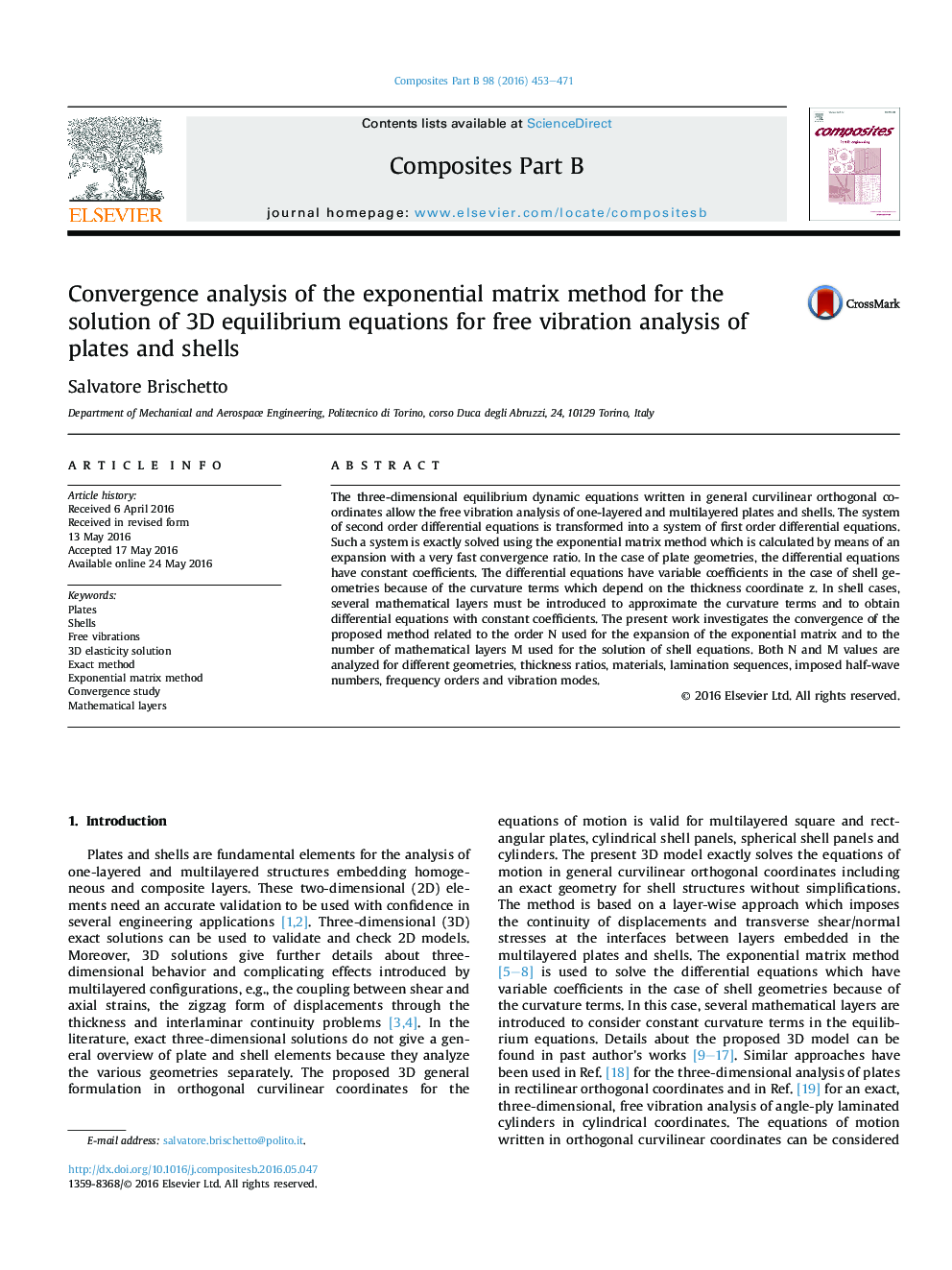| Article ID | Journal | Published Year | Pages | File Type |
|---|---|---|---|---|
| 7212589 | Composites Part B: Engineering | 2016 | 19 Pages |
Abstract
The three-dimensional equilibrium dynamic equations written in general curvilinear orthogonal coordinates allow the free vibration analysis of one-layered and multilayered plates and shells. The system of second order differential equations is transformed into a system of first order differential equations. Such a system is exactly solved using the exponential matrix method which is calculated by means of an expansion with a very fast convergence ratio. In the case of plate geometries, the differential equations have constant coefficients. The differential equations have variable coefficients in the case of shell geometries because of the curvature terms which depend on the thickness coordinate z. In shell cases, several mathematical layers must be introduced to approximate the curvature terms and to obtain differential equations with constant coefficients. The present work investigates the convergence of the proposed method related to the order N used for the expansion of the exponential matrix and to the number of mathematical layers M used for the solution of shell equations. Both N and M values are analyzed for different geometries, thickness ratios, materials, lamination sequences, imposed half-wave numbers, frequency orders and vibration modes.
Related Topics
Physical Sciences and Engineering
Engineering
Engineering (General)
Authors
Salvatore Brischetto,
